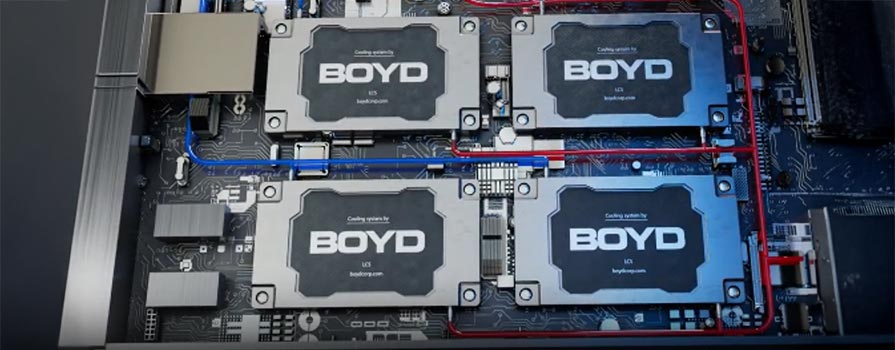Bonded Fin Heat Sink: What is it and how does it compare to other heat sinks?
Genie has a bonded fin heat sink as one of the options available to you in the Technology Matrix. For those unfamiliar to them, a bonded fin heat sink consists of 3 main parts: a base with grooves, fins, and an adhesive to “bond” the fins to the base. Hence the name “Bonded Fin Heat Sink.”
Bonded Fin Bases:
Extruded Bases from a Multi-Ton Extrusion Press
The base can be made in a variety of ways. In the thermal management and production world, extruded bases are the preferred method. The extruded aluminum alloy has great thermal conductivity and extrusion is pretty easy to manage when it comes to production and labor.
Hog Heat Sink Bases Out of a Metal Block
Another option for making bases is to take large slabs o’ metal and machine out a bunch of grooves for the fins. This can be a little less accurate (when using the saw) or time and labor intensive (if milling). Generally, these methods are solely used for prototype or small quantity runs.
I Cast…An Aluminum Base!
Casting is also an option for large quantities. But casting requires a large upfront investment in a die and you sacrifice a great deal of thermal performance by using a die cast aluminum. These alloys have much less thermal conductivity than it’s extruded or machined cousins. While these are useful alternatives, machined bases are good for small quantities and customized bonded fin heat sink bases and extruded bases are great for production.
Fun with Fins:
For the most part, all fins are cut from coil stock. A progressive punch cuts off short pieces of a huge coil of thin metal to make the fins. Another machine straightens the fins so they fit into the grooves of the heat sink base. The coil stock can come in a variety of standard thicknesses and standard heights, so these can be mixed and matched with all sorts of bases.
Quality Bonding Time:
When you have your base and your fins, you’re ready to put them together to make your bonded fin heat sink assembly. Typically, a thermally conductive epoxy is used to bond the fins into the grooves of the base. These grooves are specially designed to balance the need for adhesion while minimizing the amount of epoxy between the fins and base. While the epoxies used for bonding are created to transfer as much heat as possible, they still aren’t as conductive at aluminum. The effectiveness of this design relies on keeping this layer as thin as possible. Once you put everything together and let the epoxy cure, you’ve got yourself a bonded fin heat sink.

The Big Picture for a Bonded Fin Heat Sink:
A bonded fin heat sink has a few advantages over other heat sink technologies. For one, the aspect ratio between the fin gap and fin height exceeds anything you can produce with extrusion. You can get a 60:1 ratio with a bonded fin assembly, where extrusions can only get up to a 20:1 ratio. Besides the aspect ratio, you have the sheer height compared to other technologies. Applications that have more vertical height available can take advantage of fins up to 6″ tall to generate more surface area for heat transfer. Where tooling costs are similar to extruded heat sinks, you pay more for the added design flexibility with labor and assembly time. Compared to other assembled fin types, bonded fins are economical.

There You Have It: A Bonded Fin Heat Sink
Try out a bonded fin heat sink in Genie or discuss how you can use one in your application with Boyd Design Engineers.






